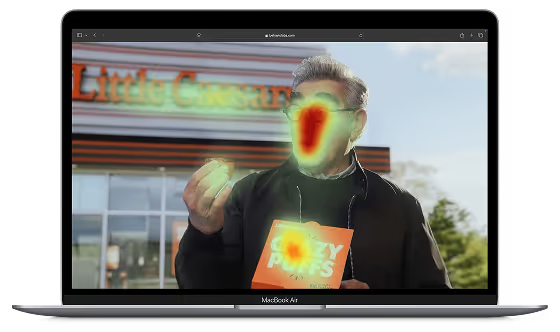Every marketer wants their campaign to stand out, but few are willing to risk polarizing their audience.
The fear of backlash or misunderstanding can easily steer creative ideas toward the safe and forgettable. Yet some of the most successful campaigns are the ones that spark strong opinions rather than mild approval.
That’s why more brands are turning to creative ad testing: to measure how people actually feel about a campaign before spending millions on production and media.
The power of campaign pre-testing
Campaign pre-testing gives marketers evidence-based confidence in their creative choices. By measuring reactions to early concepts, storyboards, or animatics, teams can see whether an idea connects emotionally, communicates the brand clearly, and drives the intended message – all before launch.
A great example comes from Kaufland, one of Europe’s leading retail chains. When preparing a campaign to celebrate the fifth anniversary of its loyalty card program, Kaufland’s creative team developed three storyboard concepts inspired by reality TV formats. The ideas were intentionally provocative; funny, exaggerated, and designed to start conversations.
But bold ads can divide people. Would the humor resonate or backfire? Would the audience remember the brand or just the joke?
That’s where ad testing made all the difference.
Storyboard testing that informed the final campaign
Before production, Kaufland used Behavio’s ad testing platform to evaluate all three storyboards across three key metrics every marketer should measure:
- Branding: Is the brand clearly recognized and associated with the story?
- Need: Is the key message — in this case, the benefit of the loyalty card — understood?
- Emotion: Does the ad spark genuine emotion and engagement?
The results revealed what many marketers discover through testing:
Branding needs to be visible early. In rough creative formats like storyboards, brand cues can fade easily. Testing showed that reinforcing Kaufland’s branding helped ensure recall.
Simpler storytelling works best. Complex plots made the loyalty card’s value harder to grasp. Simplifying the narrative kept attention on the key benefit.
Polarization isn’t a problem. The ads provoked mixed reactions — some loved the humor, others didn’t — but the emotional response was strong. That’s a hallmark of effective advertising.
From data to confident decision-making
After refining the storyboards based on insights from creative pre-testing, Kaufland moved into production and re-tested the final ads.
The data confirmed what the early results had predicted: the same storyboard that performed best in pre-testing turned out to be the most effective finished ad.
With that validation, Kaufland confidently invested most of its media spend behind the top-performing concept, knowing it would capture attention and spark conversation.
The campaign went on to deliver exactly that: strong engagement, strong opinions, and a stronger brand presence.
What marketers can learn from Kaufland’s approach
Creative testing transforms gut instinct into evidence. It allows marketers to take big swings without guessing what will work.
Here are three takeaways for brands developing bold campaigns:
- Use ad testing early. Testing storyboards or animatics saves time and money compared to post-production fixes.
- Embrace emotional responses. Polarization often signals strong memorability and discussion, not failure.
- Keep your branding clear. Viewers can’t connect your message to your brand if cues are too subtle.
With less money and attention to go around, testing makes it easier to back creative ideas with evidence instead of guesswork.
Want the same clarity Kaufland had before investing in production? Test your creative with Behavio and turn bold ideas into confident decisions.
Frequently asked questions
Ideally, before you invest in production or media. Early testing helps you avoid spending money on ideas that won’t perform.
Pre-testing helps marketers avoid costly mistakes by revealing how people actually perceive unfinished ads, storyboards, or animatics. You can refine storytelling, improve branding cues, and ensure your message lands — all before investing in full production and media spend.
Storyboard testing happens early in the creative process, using rough visuals and scripts to evaluate overall reactions. Finished ad testing measures responses to the final, polished spot. Both are valuable, but early testing gives brands time to make improvements while it’s still easy and inexpensive.





.avif)





.avif)








